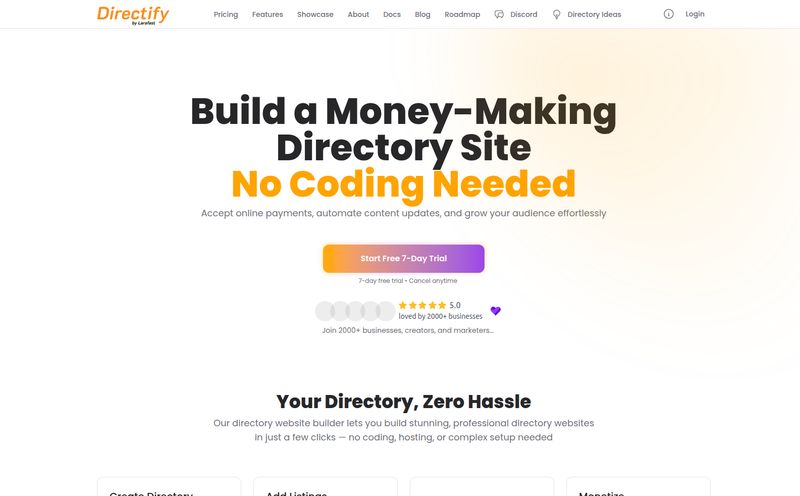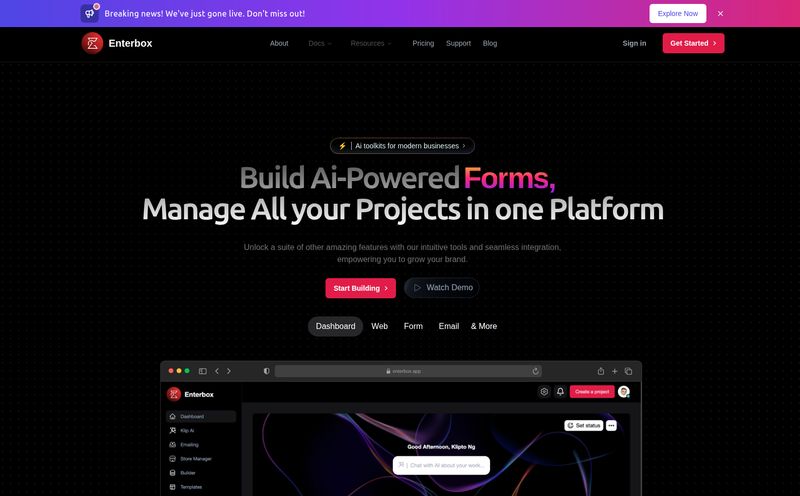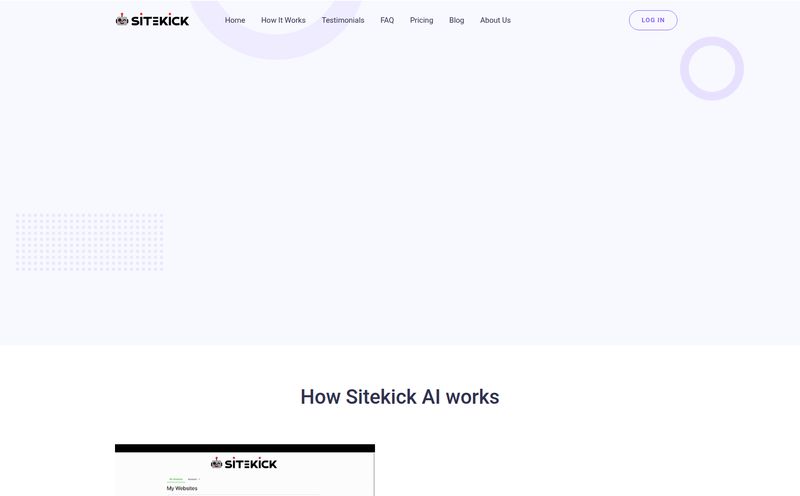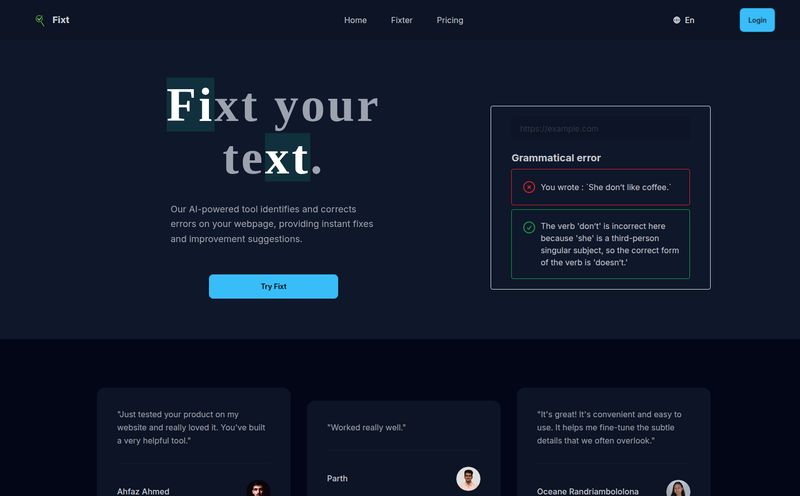We’re all in this crazy digital marketing game together. We read the same blogs, listen to the same podcasts, and we all know the mantra by heart: “Content is king.” We nod along, we get it. We know we need a blog. We know we need to post consistently to please the great Google algorithm in the sky.
But then… life happens. You’ve got a business to run. Products to ship, customers to talk to, ads to manage. And the blog? It sits there. Gathering digital dust. That post from six months ago about a company picnic is starting to look a little lonely, isn't it?
I’ve been there. You’ve been there. It's the classic content treadmill problem. It’s exhausting. So, when a tool pops up on my radar that promises to take this entire soul-crushing task off my plate, my ears perk up. The tool in question is Bosily AI, and its promise is a big one: automatically publish SEO-optimized blogs to your website. Every single week. Without you lifting a finger.
Sounds too good to be true, right? That’s what I thought too. So I did what any self-respecting SEO nerd would do. I took a closer look.
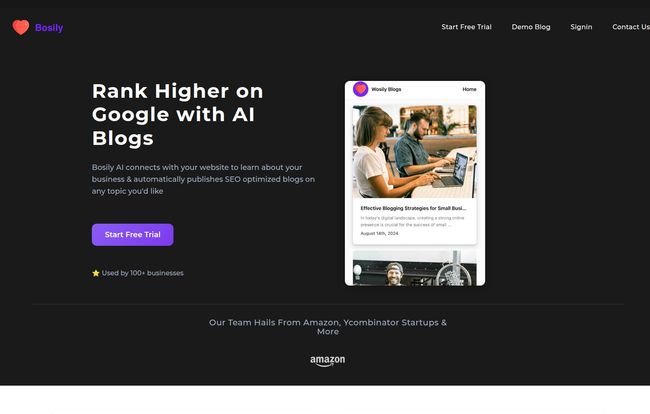
Visit Bosily AI
So, What is Bosily AI, Really?
Think of Bosily AI not just as another AI text generator like the ones we’ve all played with. It’s more like an automated content system. The whole idea is that it connects directly to your website—they mention slick integrations with Shopify, Wordpress, and others—and it sort of… inhales your business. It learns what you sell, who you are, and what your vibe is.
From there, you tell it what topics you want to cover, and it just… goes. It writes, it optimizes for search engines, and it publishes for you. It’s like hiring a junior content writer who’s incredibly punctual, never calls in sick, and is fueled by electricity instead of overpriced coffee. A fascinating, and slightly terrifying, concept.
The Big Promise: Automated SEO Blogging Every Week
The core selling point here is consistency. Any SEO professional worth their salt will tell you that consistency is the secret sauce. Google loves seeing a site that is alive and regularly updated with fresh, relevant information. It signals authority and relevance. But it's also the single hardest thing for small businesses to maintain. One blog post is easy. Fifty-two blog posts a year? That’s a commitment.
How It All Comes Together
From what I gather, the process is pretty straightforward. You connect your site, give the AI some direction on topics or keywords you want to target, and it builds a content schedule. The fact that it integrates with major platforms like Shopify and WordPress is a huge plus, as it removes a lot of the technical friction. No more copy-pasting from a Google Doc into a clunky CMS editor. It’s designed to be a set-it-and-mostly-forget-it system.
Can It Actually Help You Rank on Google?
This is the million-dollar question. Does this stuff actually work? An AI can write words, sure, but can it write content that ranks, drives traffic, and gets people to click that 'buy' button?
The Google Compliance Question
Let’s address the big AI in the room. We all remember the dark days of SEO, with keyword stuffing and spun articles that read like gibberish. So, naturally, the community was a bit nervous about AI-generated content. Will Google penalize it?
Bosily AI tackles this head-on, stating they are “fully compliant with Google’s best practices” and even linking to Google's official statement on AI content. And I have to agree with their take. I’ve read that statement a dozen times. Google's stance, in a nutshell, is this: they don’t care HOW the content is produced, they care if it’s helpful to humans. Spam is spam, whether a person or a robot wrote it. Helpful, high-quality content is what wins, period. So the burden isn’t on the AI, it's on the quality of what the AI produces.
Continuous SEO Improvement
The real SEO magic of a tool like this isn't in one single, perfectly crafted article. It's in the cumulative effect. By publishing a new, relevant blog post every single week, you're constantly sending signals to Google. You're building a library of content, establishing topical authority, and creating dozens, then hundreds, of new doorways for organic traffic to find you. It's a long game, and Bosily is designed to play it for you on autopilot.
Beyond SEO: Turning Readers into Buyers
Okay, traffic is great. We love traffic. But what we love even more is sales. This is where, for me, Bosily AI gets really interesting, especially for my e-commerce friends.
Shopify and Automatic Product Integration
One of its standout features is the ability to automatically include your products in the blogs. Imagine you run a Shopify store that sells high-end camping gear. Bosily could write an article on “The Top 10 Essentials for Your First Solo Camping Trip.” And as it lists a durable tent, a warm sleeping bag, or a portable stove, it can intelligently embed the actual products from your store right into the article.
That is HUGE. You’re not just providing value; you’re creating a seamless path from information to purchase. You’re answering a user's question and immediately providing the solution. That’s how you convert readers into buyers organically, without them ever feeling like they’re being sold to. It's content marketing and CRO rolled into one.
My Honest Take: The Good, The Bad, and The AI
No tool is perfect. As an SEO, I’m paid to be a professional skeptic. So here’s my breakdown of where I think Bosily shines, and where you might need to keep a watchful eye.
What I really like is the incredible time-saving potential, the enforcement of publishing consistency which is an SEO goldmine, and that brilliant e-commerce integration for turning content into cash. For a busy entrepreneur, this could be the difference between having a blog that works for you and having no blog at all.
On the other hand, let's be realistic. There's an initial setup required to connect your site and give the AI its marching orders. And the most important point: the quality of AI-generated content can vary. I would never recommend a 100% hands-off approach. You still need some human oversight. Think of the AI as your 90% solution. It does the heavy lifting of research, drafting, and formatting. Your job is to be the editor-in-chief—spend 10-15 minutes proofreading, injecting your unique brand voice, adding a personal anecdote, and hitting publish. They do offer an AI-assisted editor, which seems like a great feature for exactly this purpose.
What About the Price Tag?
This is the part of the review where I’d normally break down the pricing tiers. However, at the time of writing, I couldn’t find a public pricing page on their site (the link seemed to be broken, which happens to the best of us). This usually suggests one of two things: they have a custom pricing model based on your needs, or they want you to get on a demo call to see the value first. It's a common strategy for B2B tools. They offer a 'Start Free Trial' and 'Demo Blog' option, which is probably the best way to get a feel for the platform and its cost.
Who Is Bosily AI For? (And Who Should Skip It?)
I see a very clear sweet spot for this tool. If you're a solopreneur, a small e-commerce store owner on Shopify, or part of a small marketing team that's stretched thinner than a rubber band, Bosily AI could be a legitimate game-changer. It automates the task that almost always falls to the bottom of the to-do list.
However, if you're a large enterprise with a dedicated team of writers and content strategists, you probably don't need this level of automation. Similarly, if you're in a highly technical or regulated industry (like law or medicine) where every single word needs to be painstakingly vetted for accuracy and nuance, relying this heavily on an AI might be more trouble than its worth.
Frequently Asked Questions About Bosily AI
Is the content from Bosily AI unique?
Yes, modern AI language models generate original content based on the patterns they've learned. It's not copying and pasting from other sources. However, it's always a good practice to do a quick spot-check for originality and to add your own unique voice to make it truly yours.
Will Google penalize me for using AI content?
According to Google's own public statements, no. They penalize low-quality, spammy content, not content created with AI. The focus is on creating helpful, reliable, people-first content. As long as the output is high-quality and serves the reader, the method of creation isn't the issue.
How much control do I have over the blog topics?
You provide the initial direction. You can suggest topics, keywords, and angles you'd like the AI to cover. The platform is designed to learn about your business to generate relevant ideas, but you are still the captain of the ship when it comes to content strategy.
How long does it take to see SEO results from blogging?
SEO is a marathon, not a sprint. While you might see some initial traction, it typically takes 3-6 months of consistent, high-quality blogging to see significant improvements in organic traffic and rankings. The key is the consistency that a tool like Bosily AI provides.
What kind of setup is involved with Bosily AI?
The main setup involves connecting your website (like WordPress or Shopify) to the Bosily AI platform and providing some initial information about your business, your target audience, and the types of topics you want to rank for. This allows the AI to generate content that's actually relevant to your brand.
Final Verdict: Is Bosily AI Worth a Shot?
So, we circle back to the original question: is it too good to be true? My verdict is… no. It’s not magic, but it is a powerful piece of leverage. It's not going to replace a skilled content strategist or a brilliant copywriter. But it was never meant to.
What Bosily AI does is solve the problem of the blank page and the empty content calendar. It's a force multiplier. It gets you 90% of the way there, consistently and reliably, so you can focus on the final 10% that makes your brand special. For the thousands of businesses that are currently at 0%, that's an incredible leap forward.
If your blog is a ghost town, Bosily AI might just be the ghostwriter you need to bring it back to life.
